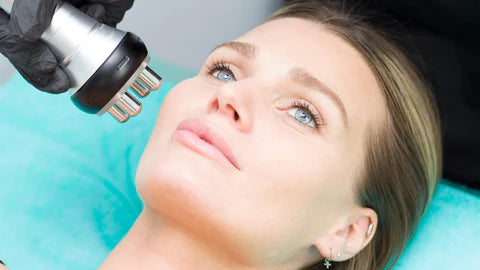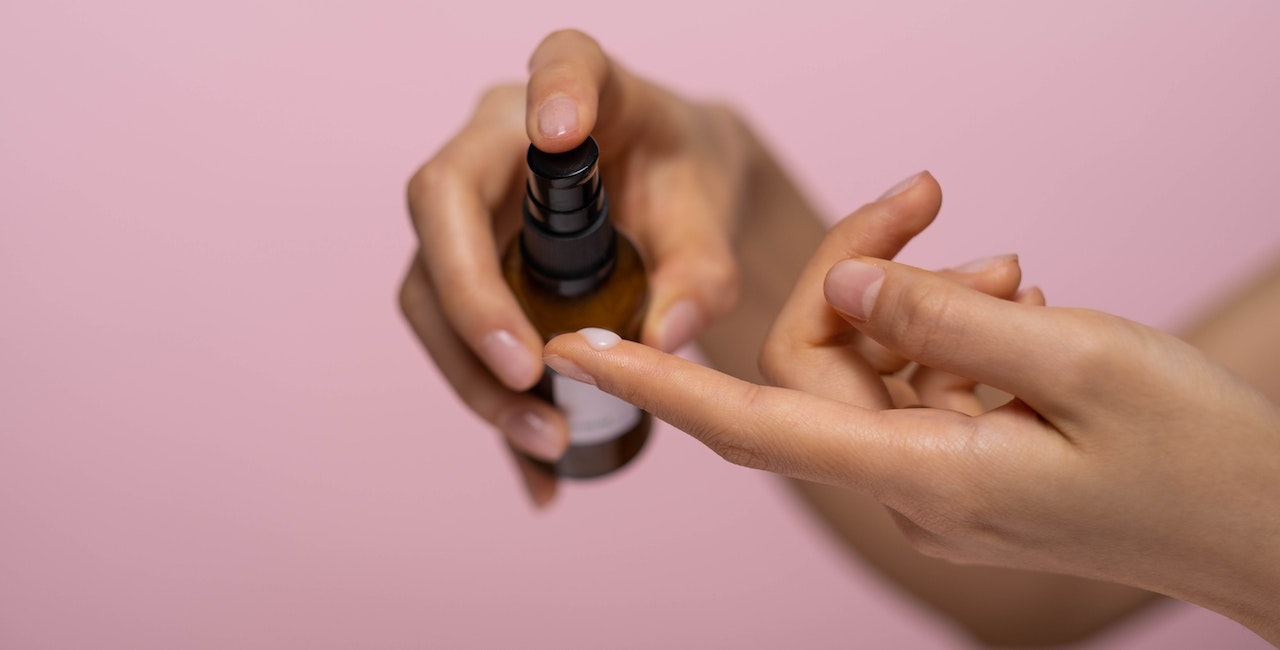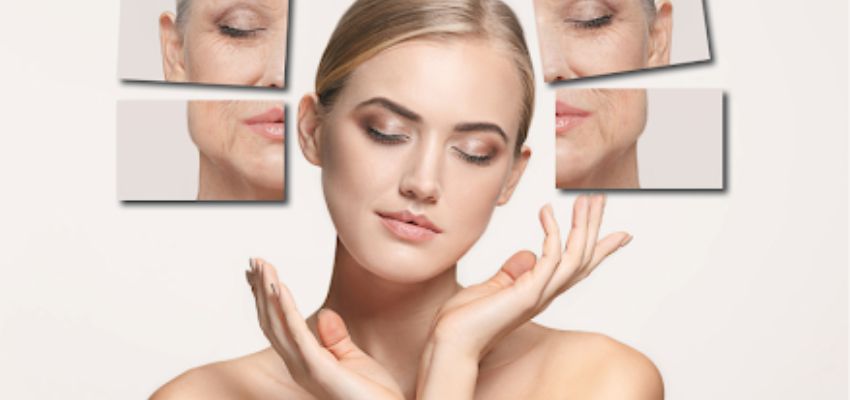Medically Reviewed by Dr. Lisa Hartford, MD
The quest for a flawless complexion has been pursued since the dawn of time. From traditional herbal treatments to the currently popular technologies, we have improved in leaps and bounds to figure out the most ideal ways of reversing the effects of aging. In ancient Egypt, Queen Cleopatra was famous for her beauty rituals, including milk baths, honey masks, and a multitude of essential oils, whereas Ancient China utilized acupuncture and traditional medication as a way of promoting overall well-being. With time, different civilizations began developing unique facial rejuvenation approaches. For example, in medieval Europe, it became common to find herbalists that sold botanical extracts, herbal remedies, and tonics with promises of improvement in the health of the skin, as the natural ingredients were believed to possess natural properties that would produce the best results when used as infusions or for facial steams.
The advent of technology in the 20th century and the subsequent rapid improvement in science completely reshaped the field of facial rejuvenation. Advanced skin care formulas were developed as Dr. Albert M. Kligman discovered retinol, Drs. Van Scott and Yu discovered alpha-hydroxy acids, and Karl Meyer and John Palmer wrote about hyaluronic acid. Since then, we have only looked further at the development of cosmetic treatments such as chemical peels, dermabrasion, and laser therapy, all of which offer invasive approaches to boosting skin health. Yet another shift in facial rejuvenation has been observed in recent decades, owing to an increasingly holistic mindset towards beauty and wellness. These keep the people’s obligations and reservations in mind and enable them to select the treatment best suited to them: there is the option of methods that provide natural-looking results, have minimal downtime, and are gentle on the skin (noninvasive treatments), and as a more costly alternative, invasive treatments that reveal rapid results but also have an ample downtime and a possibly harsher approach to the skin. One of the latest techniques in the niche of noninvasive skin treatments is microcurrent therapy.
The Rise of Microcurrent Therapy
A recent treatment to gain traction in the world of skincare and facial rejuvenation is microcurrent therapy. The name of the treatment itself points to the basic mechanisms it uses, gesturing to its uniqueness as a cutting-edge treatment that employs low-level electrical currents to stimulate the facial muscles and tissues, providing a noninvasive but highly effective alternative to conventional cosmetic treatments. Many reasons have propelled this treatment’s popularity.
One of the primary reasons for the success of microcurrent therapy is its ability to deliver visible results with minimal downtime and discomfort. Users who have opted for this treatment describe feeling a mild tingling sensation during sessions. Moreover, unlike chemical peels or facelifts, this treatment does not require anesthesia, incisions, or extended recovery periods. All these traits make microcurrent therapy an attractive option for clients who seek the advantages of a facelift without the risks and inconveniences that accompany it.
Additionally, the gentler nature of microcurrent therapy appeals to those who seek a more natural approach to skincare. Thanks to the information available on the internet, many people are now conscious of the ingredients they use on their skin and aware of potential side effects if harsh treatments are used. By mimicking the body’s natural impulses, microcurrent therapy taps into the inherent healing and rejuvenating ability of our skin, promoting cellular activity and consequent revitalization, thus serving as an effective and gentle way to enhance one’s skin.
Another factor that contributes to the rapid demand for microcurrent therapy is its versatility and adaptability, for it enables users to achieve their specific goals in skin care, whether it be enhancing their skin texture, targeting fine lines and wrinkles, or enhancing muscle tone. The possibility of customizing the treatment to address specific skin concerns has led to a satisfied and effective group of users.
Moreover, an increasing body of scientific evidence has begun to back up microcurrent therapy, with studies showing that microcurrent therapy boosts the production of Adenosine Triphosphate (ATP), a molecule that is responsible for providing energy to cells. By increasing ATP production, the rate of cellular metabolism is optimized, which leads to improved blood flow, better collagen and elastin synthesis, and enhanced lymphatic drainage. All these effects culminate to provide a range of benefits, including improved skin firmness, reduced wrinkles, and a more youthful complexion.
Furthermore, the accessibility of microcurrent therapy has also proved decisive in its popularity. While professional microcurrent therapy is available in professional spas and skin care clinics, technological advancement has made it possible to experience treatment at home. Portable and user-friendly devices have been developed for this purpose, enabling users to incorporate microcurrent therapy into their daily skin care regimen and embrace its benefits at their convenience.
As the demand for non-invasive and invasive skin treatments continues to rise, so does the popularity of microcurrent therapy. With its ability to deliver visible results, minimal downtime, and customizable options, microcurrent therapy has gained a reputation as a safe and effective way of rejuvenating skin by offering a promising approach to skincare that not only embraces the skin’s natural processes but also harnesses electricity for radiant skin.
Understanding Microcurrent Facials: How They Work
Our bodies are quite dependent on electrical impulses. You might have heard about how our brain displays electrical activity during an EEG. From the firing of neurons in the brain to the transmission of signals along our nerves, electrical impulses have the crucial role of coordinating various physiological functions in our body. While dependent on the region and purpose for which they are produced, these signals are typically measured in microvolts (µV) or millivolts (mV). These signals, which are generated by the movement of ions (small charged particles) across cell membranes, are imitated during microcurrent therapy.
At the core of microcurrent facials lies the use of electric stimulation similar to the body’s natural bioelectric impulses. The treatment, which involves applying electrical currents to facial muscles and tissue, uses specialized devices designed to emit precise and controlled waves. The currents are measured in milliamps (mA) and, due to their gentleness, are usually undetectable by the users. These currents interact with the natural current in our body and influence the movement of ions across the cell membrane. This interaction stimulates various cellular activities and helps revitalize the skin. To truly comprehend the mechanisms behind microcurrent therapy, however, we must understand and explore these interactions and the processes they set in motion in depth.
The Mechanisms of Microcurrent Therapy
The currents used in these facials serve multiple purposes. As we grow older, our facial muscles lose tone and elasticity, which is the main cause of sagging and wrinkle formation. The regular contraction and relaxation caused by microcurrent application act as an "exercise" for the facial muscles. Just like regular exercise, the application of microcurrents reconditions our facial muscles over time by toning and strengthening them. This is particularly beneficial for addressing sagging skin and restoring facial contours.
In addition to this, there is also a profound impact on the skin at a cellular level. As mentioned above, microcurrents boost ATP formation, which increases cellular metabolism. The increased energy storage thus augments cellular processes such as protein synthesis, including collagen and elastin formation. These proteins, which decline in both production and quality with age, are crucial to the elasticity and support of the skin. The electrical stimulation provided by microcurrent facials encourages the production of both of these proteins. As collagen contributes to improved skin texture and reduced wrinkles, enhanced elastin levels increase the skin’s elasticity and resilience, thereby restoring the skin’s youthful appearance.
Additionally, the gentle currents also stimulate blood flow to the facial muscles, which increases oxygen and nutrient delivery to these muscles. Not only does this nourish skin cells, but it also helps boost the removal of waste and toxic materials produced by them. This detoxification process aids skin rejuvenation from within. Moreover, lymphatic drainage is also enhanced, which leads to reduced puffiness and a clearer complexion.
Microcurrent therapy also modulates the skin’s electrical potential, so it can influence and impact cell signaling and communication. The microcurrents modify the charge across the cell membrane and therefore affect the exchange of ions and the transmission of signals between the cells. This adjustment of electrical potential has a role in regulating various physiological processes and promoting overall cellular health.
As scientific research continues to delve into the impact and details of microcurrent therapy, it will undoubtedly shed light on the mechanisms behind its effects. Positive experiences reported by individuals and the growing body of evidence point to the effectiveness and safety of this non-invasive treatment, which appears to have a vast number of appealing features and effects that make it a highly promising avenue for achieving firmer skin.
The Benefits of Microcurrent Facials
By carrying out surveys and interviewing people who have experienced microcurrent therapy, scientists have been able to deduce some of the benefits of this type of skin-tightening treatment. Most of these have already been explained above:
Muscle Toning and Face Contouring:
During a microcurrent facial, weak currents are applied to specific areas of the face while targeting the underlying muscles. These help to exercise and activate the muscles. Another advantage of toning the muscles in this way is that it counteracts the effects of muscle atrophy and gravity, which are the main causes of saggy skin. The electrical stimulation exhorts the muscles to regain their strength and tightness, thereby helping them lift and support the surrounding skin and tissues.
Furthermore, it promotes facial contouring by defining and sculpting the facial muscles. By targeting specific muscles, the currents help improve the appearance of the jawline, cheekbones, and brow arches. For example, targeting the muscles around the jawline and in the neck can reduce the appearance of a double chin, while electrical stimulation of the orbicularis oculi muscles around the eyes can contribute to a more lifted and alert look. However, these effects are usually gradual and cumulative and may depend on numerous factors, such as age and skin treatments.
Collagen stimulation and skin firmness:
An introduction to collagen and some of its qualities has already been mentioned above, however, the methodology of microcurrents in promoting collagen synthesis has not been explained yet. Microcurrents trigger the fibroblasts in the skin (the cells that carry out collagen and elastin synthesis) by acting as a catalyst when they penetrate the skin and reach the region where these proteins are formed. This leads to collagen synthesis.
Another way of increasing skin firmness is collagen remodeling, i.e., the breakdown and renewal of the collagen already present in the skin. This is done partially by encouraging collagen synthesis and partially by removing dead or old collagen fibers. An added advantage of microcurrent facials is that collagen synthesis continues to progress over time, even after the immediate post-treatment period. This leads to a reduction in scar visibility, enhanced skin texture, and augmented skin resilience.
Improved Blood Circulation and Oxygenation/Lymphatic Drainage and Detoxification:
The application of electric current, however gentle, leads to vasodilation (the dilation of blood vessels), which causes increased blood flow to the treated area. The enhanced blood circulation causes a greater supply of oxygen and nutrients to reach the cells. When oxygen, which is vital for respiration and energy production, is available in ample amounts, cell metabolism, and functions are optimized. This supports skin health and promotes metabolic function. The increased blood flow also facilitates the elimination of metabolic byproducts and cellular debris. This enhances the detoxification process and leads to a healthier complexion.
Microcurrent therapy also stimulates the flow of the lymphatic fluid, encouraging the movement of the fluid and therefore aiding in the removal of accumulated fluid and toxins. This effect reduces facial puffiness, especially around the region of the eyes and cheeks, leading to a more sculpted and defined appearance. Additionally, removing waste products and toxins further helps create an environment less prone to inflammation and other skin problems. However, these effects may be gradual and cumulative, like those of skin sculpting.
Non-Invasive and Personalized Treatment:
One of the most significant strengths of microcurrent therapy is its non-invasive nature. This, as already mentioned, has provided many users with a safe and gentle alternative to harsher treatments such as facelifts and chemical peels. Noninvasive treatments are defined as those that do not involve incisions or tissue removal. This makes them virtually painless; however, some might cause mild discomfort. This noninvasive nature not only makes microcurrent therapy appealing because of its painlessness but also because there are fewer risks of complications: scarring, post-procedure infection, and prolonged healing.
Each person possesses unique skin, and thus the skin problems they face are also unique. Microcurrent therapy is extremely flexible and can be altered to target any region or skin issue with simple alterations in the intensity and duration of the electric current used. The flexibility also means that people of any skin type can use microcurrent therapy without any reservations; oily, dry, and combination skin types can all benefit from this procedure. This versatility makes the procedure accessible to a wide spectrum of individuals who seek facial rejuvenation processes.
Adding to this, different microcurrent devices have been manufactured that enable users to incorporate the technology into their skincare regimen at their convenience. Microcurrents can enhance and complement different skincare practices such as topical creams and facial massages. This enables users to meet their unique goals with ease.
All these benefits enhance the appeal of this increasingly popular treatment by providing a safe, comfortable, and effective experience.
The Experience of Microcurrent Facials:
Microcurrent facials offer a unique and personalized experience for users seeking facial rejuvenation. From the moment one enters the treatment room to the minute the session ends, the environment is conducive to a peaceful skincare session.
During a microcurrent facial session, you will typically be comfortably positioned on a treatment bed or chair. The skincare professional will begin by thoroughly cleansing your face to ensure a clean and receptive canvas for the treatment. Following the cleansing, a conductive gel or serum is applied to your skin. This gel or serum acts as a conductor, allowing the electrical currents to penetrate the skin effectively. Once the conductive gel is applied, the skin care professional will begin the microcurrent treatment. They will use a handheld device that emits low-level electrical currents. The device is moved over specific areas of your face, targeting different muscle groups and areas of concern. The professional will carefully control the intensity and duration of the electrical currents to ensure a comfortable and effective treatment.
During a microcurrent facial, you may experience sensations such as a gentle tingling, pulsing, or vibrating feeling. These sensations are typically mild and temporary, and many individuals find them quite pleasant. The low-level electrical currents used in microcurrent therapy are designed to mimic the body's natural bioelectricity, resulting in a comfortable and safe treatment experience. Microcurrent facials are known for their high comfort level. Most individuals find the treatment relaxing and enjoyable, often comparing it to a soothing facial massage. The non-invasive nature of microcurrent facials allows you to fully unwind and indulge in the pampering experience without any pain or downtime, which is what makes it an extremely appealing prospect.
Who can benefit from Microcurrent Therapy?
- People who want to combat visible signs of aging: Many people desire to address problems such as sagging skin, wrinkles, or fine lines as soon as possible, and for these people, micro therapy can be extremely beneficial.
- People who want to have a sculpted face: Microcurrent therapy strengthens the muscles and is therefore a great option for people who want to have a sculpted and defined face.
- People with dull or lackluster skin: Many clients of microcurrent facials have dull skin and desire a method to improve their appearance and get a shiny, healthy complexion. For these people, microcurrent therapy can be a good choice.
- People with congested or acne-prone skin: The lymphatic drainage system is improved by microcurrent therapy, and this can work wonders for people who constantly seem to have acne breakouts.
Limitations and risks of microcurrent therapy:
However, like every other treatment, microcurrent therapy has its limitations:
- It is advised for people with medical conditions or implanted medical devices to consult their healthcare provider before deciding to try it out. People with certain medical conditions, such as epilepsy or heart disease, as well as those with pacemakers or other implanted medical devices, may require special consideration or contraindicate the use of electrical currents.
- The safety of microcurrent therapy during pregnancy or breastfeeding has not been extensively studied, so it is advised to exercise caution and consult with your healthcare provider before undergoing microcurrent facial sessions during these periods.
- Individuals with cuts, infections, open wounds, or active skin conditions must avoid microcurrent therapy until the skin has healed to prevent interference with the skin’s healing process.
The effects of microcurrent therapy are gradual and require consistent sessions to be truly visible. For people with extensive wrinkles or signs of aging, it is advised to try other combative approaches, as microcurrent therapy is most effective for mild to moderate aging signs.
Conclusion
While microcurrent therapy has proved to be a groundbreaking advancement in the field of skin rejuvenation, it has certain limitations that should be kept in mind to ensure maximum benefit. However, it is also an extremely efficient and safe procedure that is surely one of a kind in terms of its benefits and uses, which makes it an extremely popular choice for users looking to embrace their best skin!









Leave a comment
All comments are moderated before being published.
This site is protected by hCaptcha and the hCaptcha Privacy Policy and Terms of Service apply.